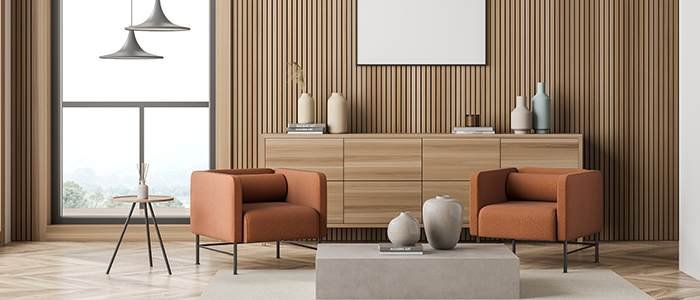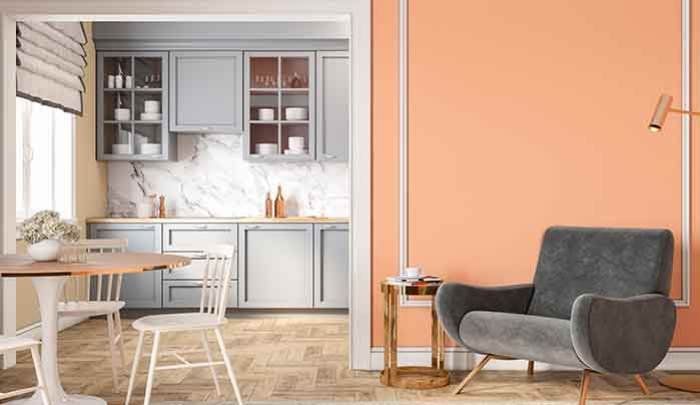Interiors of a place are something that are considered very carefully. Proper management and care is given to choose the best interiors of a place.
Many interior designing styles and things are present today which helps to have a good interior design.
People take help of interior designers for designing the places according to their wants. Many kinds of materials are used for interior designs.
This blog will cover the material veneer and laminate, which are used to cover the interiors of the place.
You will get to know about the designs and patterns along with how veneer and laminate materials help to boost the process of design.
Knowing their differences will also help you have a good idea about their role. Veneer and laminate distinctions will help you in having a good interior design.
Read the sections below to know about remarkable distinctions of veneer and laminate.
Veneer: The natural elegance and things to know about veneer
Veneer is used for interior designing as it is able to give a very perfect look. It has thin covering and this covering enables it to provide a smooth finish.
Veneer is a material that is widely used and people like to use it in the interiors because one can have many great designs with its help.
You can also add veneer in your interiors. Many good options can be chosen when it comes to veneer.
The main great benefits of veneer are shared as follows and you need to know about them. The great benefits are shared as follows-

- It can be moulded into various designs and forms.
- The sheets are perfect and also they do not expand upon fluctuations.
- It is good as it resists scratches.
- The aesthetic appeal of veneer is great.
- The patterns and textures are fine.
- Many great varieties like senzura style, dark forest style can be opted.
As you can see that there are great benefits of veneer as a material for interior designs so you can opt for it for having a good look.
You should also know about these different types of Wood Veneers.
Laminate: Practical Versatility and More to Know About Laminate
Laminates are also used for interior design purposes and one can use it for its decorative appeal.
You can check out in the market that various kinds of laminate sheets are used today for interior designs. It is a synthetic material and thus provides a lot of varieties.
The multilayer feature of laminate is a good thing and provides extra support to the layer. One can look out the benefits of laminate and then one can consider it for interior designs.
The great benefits of laminate are shared as follows and you can check them out for considering laminate-

- Laminate is more affordable than veneer.
- They are also very easy to maintain and one can use simple wiping for cleaning.
- Good material laminate provides extra strength.
- They are resistant to scratch.
- The great designs are helpful to choose from.
One can check out various good laminate options and then choose the perfect design for yourself. You will definitely have a good interior with laminate.
You may also like to read – Two-Variety Blend Laminates For The Kitchen
Distinction between laminate vs veneer
When we talk about distinction then we can consider many differences in the material veneer and laminate.
For having a good selection one needs to clearly differentiate between laminate and veneer. We have made it easier for you to choose between the laminate and veneer material for interior designing.
The table that is mentioned here will help you in choosing a good laminate vs veneer material.
| Laminate material | Veneer material |
| It is a synthetic material. | It gives the appeal of natural material and is made by thinning of fine wood. |
| It is less costly. | It is more costly than laminate. |
| It required simple maintenance and one can clean it with simple wiping. | More care is required to maintain veneer material. |
| It doesn’t have the look of real wood as it just mimics the appearance. | It has a fine and real look. |
| It has high durability. | It has moderate durability. |
| It is more resistant to stress and weather fluctuations. | It is less resistant to weather fluctuations as compared to laminate. |
| Merino, greenlam are the best brands. | Centuryply, sonear are the best brands. |
Check out the differences and then choose the material for yourself wisely. This table will help you in choosing easily.
Also Read – Marble vs Granite vs Tiles
Best Veneer Brands
Let us share some very great best veneer brands that will help you in choosing the best brand for your use. The list is shared as follows-
- Greenply offers best veneer products.
- Fortune enterprises is a well known brand.
- Century ply offers a lot of good decorative veneer material.
- Veenermart in Delhi is well known for veneer.
- CPL plywood is also a well known provider of veneer.
YOu can consult your local retailers for knowing the most popular veneer providers. Choose the good veneer for yourself of appropriate design.
Best Laminate Brands
If you are more fond of laminate material and you want to choose this for interior designing then consult the best laminate material dealers.
The brands that are popular are shared as follows-
- National plywood industries.
- Greenply industries.
- Tajpuria provides good options.
- Merino laminates.
- Royale touch laminates.
- Greenlam laminates.
- Advanced laminates.
All these are popular laminate brands and you can check out their products. Check and then consider the design for buying. Laminate can offer you good interior design.
Conclusion
Laminate vs veneer comparison has been made in this blog. Both the materials are used for interior designing and people can choose the most affordable one.
If you are looking for interior designing material and you are confused about choosing one then this blog can help you choose between laminate vs veneer.
Check out all the comparisons and then select the one that will suit you the best. The texture of the veneer and laminate is fine.
Laminate is synthetic material and veneer is derived from real wood for a real natural look. Choose accordingly and then check the best brands for veneer and laminate.
You should also consider Sunmica sheet designs here.
Consider Reading:-


